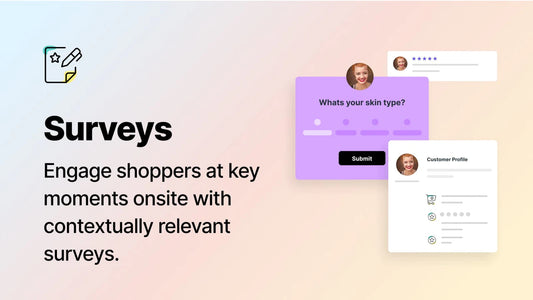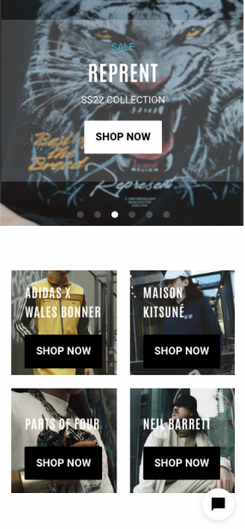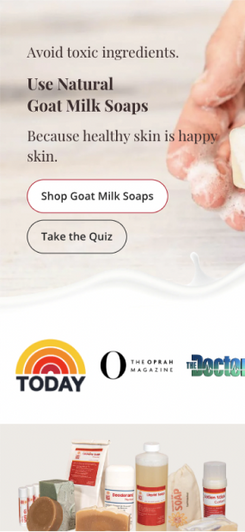More often than not we see Shopify businesses using Facebook Ads to drive traffic to their store, with some brands committing over 50% of the marketing budget to this source. With such significant investment, a lack of a strategic and data-focused approach can seriously affect the performance of this channel and overall financial health of the business.
At Blend, we’ve helped many high growth brands build out a fully optimised A/B testing plan for their Facebook Ads. For us, it’s all about developing their understanding of the platform and adding the realisation that a good Facebook Ad campaign doesn’t start with one image or one audience.
To help optimise these channels and educate these brands, we always provide a free Facebook Ad Audit for those interested in working with us. In these audits, we look in-depth at the platform and ask ourselves:
- Is it set up correctly?
- Are they targeting based on the customer journey?
- Are they using cold or warm audiences?
- Have they A/B tested?
If these are areas you haven’t looked at for your Facebook Ads, then this blog could be a great resource. Below, we take a behind the scenes look at the top 5 most common mistakes we see high growth brands make with their Facebook Ads and tell you exactly how to avoid these.
Number 1: The Pixel isn’t set up correctly
Before you can even start creating Facebook Ads, you need to create and set up your Pixel. This is a technical side of Facebook Advertising and we’ve seen it catch brands off guard. More often than not the Pixel is not set up correctly and this can have a negative impact on your ad performance as it means the Pixel cannot track events correctly.
The first step you can take to avoid your Pixel from being set up incorrectly is by testing it. We recommend running Diagnostics first as this will show you any immediate issues like the one in this screenshot:

When we first saw this error appear on one of our client’s accounts we knew immediately there was an issue with the Purchase Event on their Pixel. From experience we know if the Purchase Event isn’t working correctly, then the results from the Facebook Ads will not be accurate.

We immediately checked the Shopify Integration was set up correctly within the Facebook Ad platform. This small green dot is your indication that your integration is live and working. Without it, you might run into issues like this example.
Number 2: Acquisition vs Remarketing vs Retention
When you first create a Facebook Ad, what’s your key focus? Many high growth brands use it to encourage new visitors to the site. But the problem is once they get them to the site, they don’t do anything with them. There’s so much untapped potential by not encouraging new website visitors to purchase or to sign up to a mailing list and we see this too often.
In the example below, we took a look at all the campaigns our client was running and we were able to say:
- 60% of campaigns focused on Acquisition
- 40% of campaigns focused on Remarketing
- 0% focused on Retention
This setup was causing a high number of sessions but low conversion rate compared to other channels in Google Analytics.

For Established Businesses, we always recommended the following splits:
- 30 - 40% for Acquisition
- 50 - 60% for Remarketing
- 10 - 20% for Retention
By distributing the campaigns in this way, the focus turns towards remarketing those on the website as this leads to a better conversion rate. As can be seen below:

Also note: we never stop Acquisition completely as it’s always good to encourage Facebook users to your website as this allows you to retarget them using Facebook Ads.
We also always include a campaign for Retention. Believe it or not, customers are more likely to repeat purchases 30 days after they’ve already purchased. Including a Retention campaign where you can offer an incentive to your already purchasing customers. Leading to a better repeat customer return rate and higher conversion rate.
Number 3: There are no optimisations
Facebook Ads will not be successful if you only use one campaign, one ad set and one ad. You’re giving your audience no option to decide what they like, and they’re going to burn out pretty quickly from being targeted all the time. This is something we see to often and is always our top recommendation and where a management service is most beneficial to high growth merchants.
Here’s a recent example we saw:

On the plus side, it’s great to see they are using different visuals. However, you may notice this is at the ad set level. This client used 3 identical audiences to test their visuals, therefore, are indirectly competing with themselves. By simply moving these to the ad level and using one ad set, they would be able to see easily which ad the audience likes best.
As part of our Facebook Ad Management Service, Blend has built out an extensive A/B testing plan. We don’t just test ad formats like video, images or stories. We drill down into the nitty-gritty of every aspect, we test and then we optimise. We can tell our clients exactly what ad format, image type, visual type, icons, graphics, copy, links, caps lock and emojis each of their audiences like so that we can offer each of them a personalised customer journey from first impressions to the last encounter.
From Thanksgiving to Cyber Monday, this approach saw us see an all-time high of 27.63 ROAS for an Instagram based audience for a T-shirt clothing brand. Simply from fully optimising their demographics, interests and visuals.

Number 4: They don’t utilise Lookalike Audiences
One of our pet peeves we see high growth brands make is not targeting the right audience. Too many times have we seen 18-65+ those living in the US. Broad targeting like this isn’t going to get you anywhere. Your budget won’t be able to target the whole of the US and you’re missing out on targeting those who might actually be interested in your brand.
A way to resolve this is by using a Lookalike audience. A lookalike audience is what we liked to call a Luke Warm audience. Technically they are cold but Facebook recognises them as having similar interests to your warm audiences. For example, if you create a Custom Audience for Add to Carts in the last 30 days, you can use these as a Lookalike Audience and target those from your base country who are most like your custom audience.

For a high growth brand, Blend always focus the Acquisition Campaigns around Lookalike Audience. We’ve found these to be the best for Landing Page Views and even occasionally get a few purchases. In this example, you can see how Blend has A/B tested lookalike audiences to find the ones that had the most number of landing page views for the lowest cost.
Number 5: Using their budget in the right places
Budget is one of the major components for Facebook Ads and is fundamentally what allows you to target Facebook users. Often we see Shopify Entrepreneurs try and spread the budget too thinly resulting in high-frequency levels and ad fatigue.
Here’s an example of this issue below. Note how all Acquisition campaigns have a frequency below 2. But the Remarketing campaigns are at 9.44 and 10.81. These Remarketing campaigns are retargeting their add to cart and website visitors audiences, and the frequency is above the 3-5 we would normally recommend.

If you notice this in your Facebook Ads then it’s likely your audience is:
- Too small. An audience size of 1,000 is needed for good budget distribution.
- They are being targeted too many times, leading to ad fatigue and ads not performing as well over time.
- They have seen the same ad too many times. Creating more ads at the ad level can help with this.
When we come across an issue like this we always look into our client’s budget and ensure it’s split correctly across our Acquisition, Remarketing and Retention Campaigns. Remember the percentage splits from earlier? We use these same guidelines to figure out the budget splits for our client.
We took this large 10 campaign structure and bring it down to 3 key campaigns, creating different ad sets to test different audiences. By implementing this structure we are able to control budget distribution better and we were able to get the following results:

Implementing an extensive A/B testing and optimising the process for your Facebook Ads can be a time-consuming task. Without this, you are losing out on potential new customers and leaving money on the table. We understand it can be hard to analyse your own process especially when time is a factor.
Recognised for our expert level of knowledge, Blend are official Facebook Marketing Partner’s ready to share our experience and off recommendations and improvements to high growth Shopify brand so you can get the best from your Facebook Ads.
For a more in-depth, personalised audit, contact us today to receive a Facebook Ad Audit, especially for your business.







